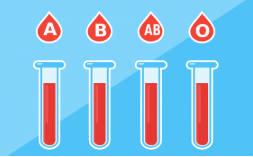
Professor Barbara Masser, Dr Alison Gould
Many years ago, way back in the 20th century, some inquisitive soul asked me what I researched. “Blood donor recruitment and retention” I said proudly. Shooting me a look that suggested I had instead said “how to slaughter helpless kittens and unicorns” they proudly declared “there’s no future in that .. we’ll have artificial blood by the end of the century”. While moderately cheered that they had correctly heard my research passion, I was somewhat deflated as I contemplated changing research direction. Given my other passion for (the psychology of) crime I sloped off to rethink my research career and find out a bit more about murdering kittens and unicorns*.
Fortunately, (for me and particularly for kittens and unicorns), there has been no need to start my new career. But what this means is that we are still dependent on the goodwill of thousands of voluntary non-remunerated donors each year to supply blood products. And the challenges in maintaining this blood supply and keeping it safe are immense. Issues of limited shelf life aside, threats to the safety of our supply range from the pesky mosquitos and Zika (but not in Australia) to more individual threats to the safety of the transfusion recipient. Most people are aware that blood transfusions have to be matched to the recipient’s blood group, with the most well-known matching occurring on the basis of the A, B and Rhesus antigens. However, we actually also possess many more antigens on our blood cells that vary between people. Typically, these cause no issues, but for those who receive frequent transfusions, such as those with sickle cell disease, continual exposure to varying antigens can result in alloimmunisation. How the recipient reacts to this varies, but it is fair to say it isn’t great and it would be better if those reactions didn’t occur.
So, is this where blood produced in a lab comes in? Scientists have long talked about a day when blood ‘that is simply better than the real thing’ can be manufactured. In this transfusion utopia, this product could simply be pulled off the shelf, when and wherever needed, and given to anyone with no ill effects. And certainly, advances have been made in this space, both in the production of blood substitutes, (see the beginner’s guide to this by Professor Chris Cooper and most recent developments in the field here), and in attempts to produce human blood and red blood cells in the laboratory. Products have been developed that have allowed transfusions to patients unable to receive whole blood. Issues remain however, not least in eliminating undesirable side effects of these products and working out how to ‘scale up’production. However, the prospect (and potential) of artificial blood remains.
So, should those kittens and unicorns start running for cover? Well, I think that may be a little premature. Even if a safe, finished product came onto the market tomorrow there are still major hurdles to be overcome if recipients or their caregivers have the option to choose what is transfused. A study in the US that questioned participants about the acceptability of transfusing artificial blood to improve physical abilities in healthy individuals brought this issue back into the spotlight. While ‘performance enhancing blood’ is unlikely to eventuate (just as young blood is unlikely to reverse ageing), evidence from other fields tells us that – at least in the short term – blood substitutes may not be as acceptable to most as blood from fellow humans. As with any scientific development that ‘interferes with nature’, concerns about the risks involved are paramount. In recent years we saw the claims of Frankenfood that emerged with increased public discussion about genetically modified food. More recently we have seen the same sort of fear, comment, and conspiracy emerge in relation to nanotechnology. In short, and with perhaps good reason, the general public are not persuaded by the simple ‘trust us’ message of scientists, nor will just providing information convince them. Rather, the complex interplay of perceived risk, belief in technology and innovation, trust and fear (to name just a few) that feed into public debate around these sort of products mean that generating these potentially revolutionary products is only half the battle. The other half is persuading recipients that these products are equal to, if not better, than products from human donors. Artificial blood may revolutionize patient care in situations where real blood cannot be adequately sourced or stored, and may eliminate the complexities that can arise for those who need frequent transfusions. However, does that mean we no longer need to recruit and retain warm-blooded donors, but can instead retreat to our labs with our test tubes? My sense is that those kittens and unicorns can sleep easy as we will still need to rely on the immense generosity of voluntary non-remunerated donors for a long while yet.
*this is, of course, a joke. I love cats. Unicorns on the other hand….
Original source, click here. Published
If you’d like to know more about synthetic blood, check out this recent article on freethink – The Race To Get Artificial Blood Into Patients’ Veins
